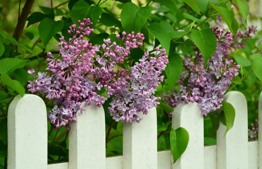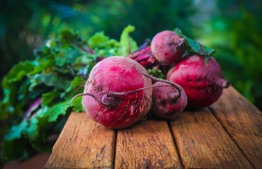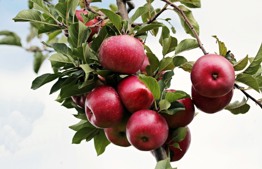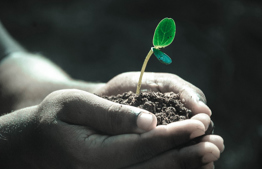Orlah, Chapter 8: Neta Revay
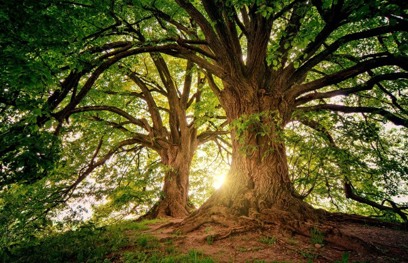
The laws governing neta revay, fourth-year saplings. Plus: can you redeem neta revay in the Old City of Jerusalem?
- The Torah states: "When you enter the land and plant any tree for food … In the fourth year all its fruit shall be set aside for jubilation before the L-rd" (Vayikra 19:23–24).
- The fruit of the tree's fourth year are considered neta revay (lit. fourth-year sapling). The laws governing this fruit is similar to ma'aser sheni: in Temple times, this fruit would be brought up to Jerusalem and eaten in a state of ritual purity.[1]
- Even today it is forbidden to destroy neta revay fruit; for this reason, anyone who needs to thin out the neta revay fruit should do so in the following order of preference:
- It is permitted to thin (both manually and mechanically) in the blossoming stage.
- It is also permitted to thin out fruit in later stages of development, but only by using chemical sprays.[2]
- Today we cannot eat neta revay fruit in Jerusalem, since both people and the fruit are impure.[3] For this reason, we redeem them (pidyon)[4] by transferring their sanctity (chilul, lit. desacrilization) to a coin. Indeed, this fruit is called kodesh hilulim, and the Sages relate this to the phrase kodesh chilulim.[5] Because the fruit cannot be eaten today, we do not redeem this fruit onto money of equivalent value,[6] but rather onto a coin worth a perutah [7].
- To redeem neta revay fruit, one can transfer its sanctity to a coin designated for chilul ma'aser sheni.
- The blessing recited on redeeming neta revay is: "ברוך אתה ה'... אשר קדשנו במצוותיו וצוונו לפדות נטע רבעי"; (Blessed are You … Who sanctified us with His commandments and commanded us to redeem fourth-year saplings).[8] If redeeming a fourth-year vineyard (at least five grapevines),[9] we end the blessing: לפדות כרם רבעי(redeem fourth-year vineyards).[10]
- When redeeming one's own fourth-year fruit onto a coin (or the Beit HaOtzar coin), it is necessary to add a quarter[11] of the value of the fruit (chomesh, lit. one-fifth).[12] The text recited is as follows:
פירות הרבעי בתוספת רבע מערכן מחוללים, כל דרגת חיוב על פרוטה ורבע בנפרד, במטבע המיועדת לכך בשבילי.[13]
If I have fruit of neta revay, the fruit plus a quarter of its value is now redeemed by transferring its sanctity to a peruta-and-a-quarter's worth of my designated coin. This redemption applies to each type of produce in accordance to its level of obligation.
- In principle, if one redeems someone else's fruit, one does not add a chomesh. Since there are intricate halachaot involved (for different types of produce, with varying levels of obligation, or produce that requires an additional chomesh, and produce that does not), Torah VeHa'aretz Institute recommends that one says this text each time, since it covers all possible scenarios. After redeeming the fruit,[14] some say:
ריבון העולמים, גלוי וידוע לפניך שבזמן שבית המקדש היה קיים היו פירות רבעי להקדש[15] ועכשיו שאין בית המקדש קיים, יהי רצון מלפניך שתהא פרוטה זו להקדש וייצאו פירות אלו לחולין
Master of the universe, it is revealed and known before You that in the time that the Holy Temple stood, the fruits of fourth-year saplings were consecrated. But now, that the Holy Temple does not exist, may it be Your will that this peruta will be consecrated and these fruits will be desacralized.
- As mentioned in Chapter 6, Section A, 4, fruit trees grown in the home or in a hothouse are also obligated in orlah, as the Torah states: "כי תבואו אל הארץ" "When you enter the land" (Vayikra 19:23); a house also falls under the category of aretz, land. In the fourth year, these fruits also assume the status of neta revay. They are redeemed onto a peruta. It is possible to recite a blessing on this chilul.[16]
- Neta revay fruits are exempt from terumot and ma'aserot.[17]
- If there is a doubt whether the fruit is orlah or neta revay, we are stringent, and do not eat or benefit from the fruit.[18]
- If there is a doubt whether the fruit is neta revay, terumot and ma'aserot are separated and the neta revay fruit is redeemed without a blessing.[19]
- The laws of fourth-year saplings also apply during the shemita year, just like every other year. Fruit of neta revay trees are redeemed during the shemita year according to the standard procedure: the one performing the redemption adds a chomesh even if not the owner of the trees (since during the shemita year, everyone is considered the owners of the fruit), and if the tree is definitely neta revay, the full blessing is recited.[20]
- When redeeming neta revay fruit from trees sold to a non-Jew for the duration of the shemita year (through heter mechira), recite the text without the blessing.[21]
- The blessing on redeeming fruit of neta revay is only recited when the fruit is definitely from a fourth-year sapling—such as when one plants bare-root fruit trees.[22] However, if one bought a sapling in a clod of earth that was placed on an surface that disconnected it from the ground, the blessing should not be recited. This is because there is a doubt regarding the orlah count for potted tree.[23]
- There are orchards where some of the trees are in their fifth year or more (with chulin fruit), while other trees are in their fourth year (such as filler trees), whose fruit is neta revay. In this case, it is forbidden to harvest all the fruit together and mix them up, since "אין מבטלים איסור לכתחילה""one should not nullify a prohibition a priori"; by mixing the fruit together, one nullifies the positive injunction of redeeming neta revay.[24]
- If there will be no way to separate the fruit during the harvest, the best solution is to redeem all the neta revay fruit while still on the tree, and say:
"פירות הרבעי מחוללים לכשיתלשו על פרוטה ממטבע המיועדת לכך בשבילי"
"The fruit of the fourth-year sapling are desacralized, from the time they are picked (lit. detached), onto a peruta from the coin designated for me." Here, it is important to ensure that there are enough perutot free in the coin designated for chilul, since when one says the formula above, a peruta is needed for every individual fruit harvested.[25]
After the harvest, when the neta revay fruits are mixed in with the rest of the tevel fruits, one should take a little more than 1% of the fruits that are definitely tevel, and designate teruma and terumat ma'aser. For the rest of the ma'aserot, however, one should say "מהטבל שיש כאן" (of the untithed produce that is here).[26] - In order to allow workers to snack on the fruit in a permitted fashion, one can recite a special formula for setting aside "from the harvested onto the attached."[27]
- Neta revay fruit that contract ritual impurity can be redeemed even in the area of ancient Jerusalem[28] of Second Temple times.[29] However, one should neither directly or indirectly defile the fruit.[30] For this reason, neta revay fruit should be redeemed before bringing them into the Old City (from the Second Temple time). If one did bring in the fruit when pure, one should set the fruit aside until it rots.[31] In other places in the new parts of Jerusalem, it is permissible to redeem neta revay
- Outside the Land of Israel, neta revay is redeemed without a blessing.[32]
- Neta revay fruit in olei Mitzrayim borders should be redeemed without a blessing. [33]
[1] Rambam, Hilchot Ma'aser Sheni 9:1.
[2] Rabbi Yoel Friedman, "Thinning neta revay fruit," Emunat Itecha 97 (5773), pp. 58–63; Rabbi Ehud Ahituv, "Removing neta revay tiny fruit of heter mechira," HaTorah VeHa'aretz VIII (5768), pp. 452–465.
[3] Similar to ma'aser sheni, that is not eaten today even in Jerusalem, since there is no mizbe'ach (altar) today. See Rambam, Hilchot Ma'aser Sheni 2:1. Similarly, today everyone is considered tameh lamet (impure due to contact with the dead). See Bechorot 27b, Bi'ur HaGra §331:36.
[4] And it is impossible to redeem neta revay before they reach onat hama'aserot. See Rambam, Hilchot Ma'aser Sheni 9:2; see also Kesef Mishneh, ibid. The definition of onat hama'aserot is when produce has sufficiently ripened as to be edible in extenuating circumstances, that is, at the beginning of the ripening process; see Laws of Terumot and Ma'aserot, Chapter 11, §1–2.
[5] Yerushalmi, Ma'aser Sheni 5:2. The verse says kodesh hilulim, and the Yerushalmi switches the letter hey with a chet, understanding the verse that one must perform chilul, desacrilization, on the neta revay.
[6] She'iltot DeRav Achai Gaon, Kedoshim §100, incipit she'ilta; Rambam, Hilchot Ma'achalot Asurot 10:17 and Hilchot Ma'aser Sheni 2:2; Sefer HaTerumah, Hilchot Eretz Yisrael (and Tashlumei HaTerumah 5776), p. 178 and n. 87. This is also the ruling of the Shulchan Aruch, YD §294:6.
[7] Today (5779), a peruta is worth approximately 6 agorot. The value of a peruta fluctuates from time to time, so the current value should be checked. See Laws of Terumot and Ma'aserot, Chapter 5, Section D. See also the current value on the Hebrew Torah VeHa'aretz website: https://www.toraland.org.il/.
[8] That is the ruling of Rav Avraham Kook in Olat Ra'aya I, p. 353; see n. 86 by Rabbi Zvi Yehuda Kook, Olat Ra'aya II, pp. 416–420 explaining that in Temple times, the phraseology in the blessing would be al hapidyon;since the Temple was destroyed, we say lifdot. This is because in Temple times, this redemption was voluntary. But today we are obligated to redeem ma'aser sheni and neta revay, since we are concerned that someone might accidentally eat the sacred fruit (since we cannot currently eat it in a state of purity). The Shulchan Aruch (YD §294:6) writes that the text is: al pidyon revay. See Laws of Terumot and Ma'aserot, Chapter 3, Section C, n. 6.
[9] See Mishnah Kila'im 4:6, which says that the minimum number of vines necessary to constitute a vineyard is five in the format of "two opposite two and one jutting out to form a tail."
[10] Some use the term kerem revay: Rosh, Halachot Ketanot, Orlah §9; Abudarham, Birkat HaMitzvot. See as well: Kaftor VaFerach, chap. 53. Many poskim use the terminology lifdot hakerem or al pidyon hakerem, but do not mention the term revay: She'iltot DeRav Achai Gaon, ibid.; Halachot Gedolot §6, Hilchot Orlah; Sefer HaEshkol, Hilchot Orlah; Responsa Ritva §145; Beit Yosef YD §294:11, quoting Rabbeinu Yerucham.
[11] In biblical and Talmudic terminology, the chomesh is worth one quarter of the produce; that is, when adding it to the ma'aser sheni, there will be five equal parts all together. This is called chomesh milevar, lit., one-fifth from the outside. See Bava Metzia 54a, and Rashi, ibid., incipit. hu.
[12] Rambam, Hilchot Ma'aser Sheni 9:2.
[13] From Beit HaOtzar's formula for setting aside terumot and ma'aserot, here.
[14] Orchot Chayim (Aharon HaKohen of Lunel), Hilchot Orlah (vol. II), incipit, ketzad podin ; Kol Bo §92. See also the long Darkei Moshe , YD §294:5; Neta Hilulim, p. 19.
[15] This is not hekdesh, in the sense of consecrated to the Temple, rather sacred; since neta revay is considered mamom gavoha, that is, exalted money, money that belongs to G-d. See Rambam, ibid.
[16] Even though neta revay does not only depend on the orlah prohibition, its laws are also tied to ma'aser sheni. For this reason, the poskim are divided regarding the obligation to separate terumot and ma'aserot for produce growing in the house. See Rabbi Yehuda Amichay, "Neta revay in hothouses," Emunat Itecha 48 (5762), p. 27.
[17] Rambam, Hilchot Ma'aser Sheni 9:4.
[18] Employing the principle of safek de'oriata lechumra; when biblical prohibitions are concerned, we are stringent (and orlah is a biblical).
[19] According to the rule safek berachot lehakel (we are lenient when there is a doubt regarding blessings), when there is a doubt, we perform the chilul without a blessing. On the other hand, in most cases it is necessary to separate terumot and ma'aserot: if this fruit is not neta revay, it would be obligated in terumot and ma'aserot. Of course, in this case we should not say a blessing on either the separation or chilul ma'aser sheni (during years 1,2,4, and 5 of the shemita cycle). It is possible that there is a factual doubt or a halachic doubt. Factual doubts include: I don't know whether the fruit bloomed before or after 15 Shevat of the fifth year or I bought the fruit in a place without kashrut certification and I don't know if they are neta revay fruit. Halachic doubts can include: plants in the intermediate category—for which it is unclear whether they are trees or vegetables (see Orlah, Chapter 3); if the trees were sold to a non-Jews through heter mechira during shemita; the uncertainty about whether the orlah years can be counted in the nursery; the status of citrus fruit that bloomed before 15 Shevat and was harvested after 15 Shevat: there is a halachic doubt as to whether the blooming (chanata) is the determining stage, as is the case with other trees, or if the determining stage is the time of harvest (like with etrogim), among other doubts.
[20] Rambam, Hilchot Ma'aser Sheni, 9:7; Katif Shevi'it, p. 330.
[21] From the words of the Rambam, Hilchot Ma'aser Sheni, 10:10, it seems that neta revay applies to a non-Jew's trees as well. According to Aruch HaShulchan YD §294:8, neta revay does not apply to a non-Jew's trees. See also Chazon Ish, Ma'aserot §7:26; Katif Shevi'it, p. 331.
[22] In this case, the orlah count certainly begins from the time of the transplant, and not beforehand. This also applies to one who buys saplings planted in a clod of earth in a nursery, when there is halachic supervision and one knows with certainty that the plant was connected to the soil the entire time. Only in this case are the orlah years are calculated from the time the sapling is produced in the nursery.
[23] Even though for the prohibition of orlah, which is a biblical prohibition, we are stringent and do not include the years of a tree in the orlah count when it grew in an unperforated pot. However, it is possible that each sapling in a pot, even if unperforated, is subject to orlah; see Rambam, Hilchot Ma'aser Sheni 10:8; see also Orlah, Chapter 6, n. 4.
[24] Rabbi Yaakov Ariel, "Mixture of revay and tevel," BeOhalah Shel Torah IV, §38.
[25] Rabbi Yoel Friedemann, "Separating terumot and ma'aserot from an orchard with neta revay trees," HaTorah VeHa'aretz IV (5759), pp. 355–358. See also BaOhalah Shel Torah IV, §37, at the end of the responsum. See also Neta Hilulim, p. 22, Sha'arei Tzvi §33, who writes that one should use a coin of sufficient value for 240 redemptions.
[26] The 1% that is on the lower side of the produce I have set aside remains tevel for the time being. The rest of what I have set aside is teruma gedola for all of the tevel that is here.
The 1% I mentioned and another 9% on the upper side of the tevel that is here is ma’aser rishon.
The 1% that I previously set aside is terumat ma’aser.
Another 9% on the lower part of the tevel that is here is ma’aser sheni,
and if the year requires ma’aser ani, it is ma’aser ani;
HaTorah VeHa'aretz, ibid., pp.357–358.
[27] There are additional conditions for this separation (such as separating ahead of time more than 1% of what the workers will eat). See above, Terumot and Ma'aserot, Chapter 12.
[28] Pesachim 36b; Shulchan Aruch YD §331:135. Alternatively, see Kaftor VaFerach, chap. 41, pp. 15–16, who says that one cannot redeem impure ma'aser sheni in Jerusalem; we do not follow this opinion, though, rather we follow the Shulchan Aruch, ibid.). See also Radbaz II §731; and Pe'at HaShulchan §3:13, Beit Yisrael §28.
[29] Until the City of David in the south and the Russian Compound in the west. See above, Terumot and Ma'aserot, Chapter 5, §6.
[30] Rambam, Hilchot Ma'aser Sheni 9:1; Hilchot Terumot 12:1.
[31] See Rabbi Ehud Ahituv, "Redeeming ma'aser sheni in Jerusalem today," Emunat Itecha, 53 (5763), p. 49, that there are those who are lenient and allow taking the fruit outside the walls of Jerusalem to redeem them there. See Laws of Terumot and Ma'aserot, Chapter 5, n. 13. Note that one should impart impurity to ma'aser sheni produce when it is still tevel, and only then separate the ma'aser sheni. This cannot be done with neta revay fruit. This poses a difficulty: what should be done with fruit of trees in their fourth year growing in the Old City (or other parts of sanctified Jerusalem)?
[32] Shulchan Aruch, YD §194:7 and Shach §17. According to the Gra (§28) and the Rema, only the grapes of fourth-year vineyards need to be redeemed, but not other fruit. This is only the case when the fruit is definitely neta revay, not when there is a doubt. See Chapter 1, §A.
[33] See Rabbi Shay Levi, "Neta revay today in the borders of olei Mitzrayim," Emunat Itecha 121 (5779), pp. 41–50. From Mitzpeh Ramon through Eilat, kerem revay (at least five vineyards) should be redeemed with a blessing, but for other fruit trees (and less than five vineyards) the redemption is performed without a blessing. See Rabbi Yoel Friedemann, "The obligation of kerem revay in Mitzpeh Ramon," Emunat Itecha 101 (5774), pp. 21–22.

